MUSE, the Trento Science Museum, is the successor to the Museo Tridentino di Scienze Naturali (Tridentine Museum of Natural Sciences) and enchants visitors with an immersive experience dedicated to nature, mountains, technology and sustainability. The bright, sustainable building designed by Renzo Piano, which takes up the profile of the Trentino mountains, makes a visit to the museum even more engaging in an exciting journey through the wonders of natural science and palaeontology.
Table of Contents
The incredible building of MUSE Museum of Science in Trento
The MUSE, designed by Renzo Piano and opened in 2013, is the meeting point between traditional natural history museums and the interactive installations of modern science museums. The structure focuses on sustainability and energy saving, themes reflected in the visitors’ path.
PLAN YOUR TRIP TO ITALY
Stay connected on the go with a Holafly eSIM, offering unlimited data at reliable 3G, 4G, and LTE speeds across Italy.
For added peace of mind during your travels, take out Heymondo travel insurance, perfect for a stress-free and well-protected adventure.
If you plan to explore beyond the main cities, renting a car is the best way to discover Italy’s hidden gems at your own pace.
The architecture of the museum is itself an attraction. The shape of the building is reminiscent of the surrounding mountains of the Dolomites, while the interior impresses with its skilful balance of full and empty spaces, designed to tell the story of life on Earth through the story of life in the mountains. Despite its considerable size, the MUSE is not a very big museum because several spaces are offices or educational areas open only to the public during activities.
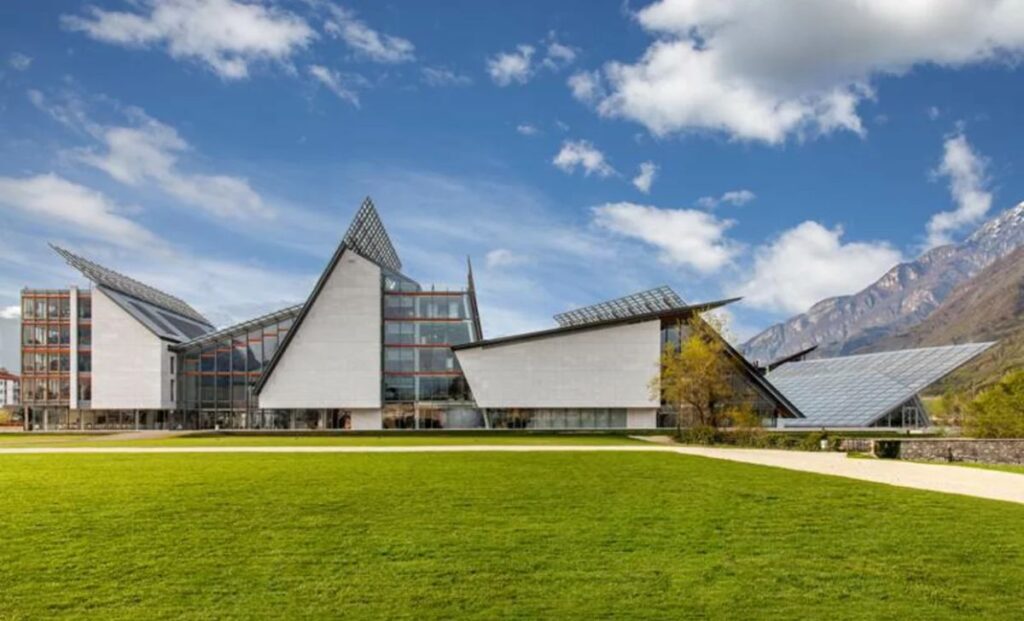
What to see at the MUSE Museum of Science in Trento
In the heart of the Le Albere district, the MUSE in Trento, designed by Renzo Piano, covers an area of about 19,000 square metres on six floors. Inside, an empty central space connects all levels of the museum, with spectacular stuffed animals suspended in the void.
The exhibition route follows the metaphor of the mountains, narrating the formation of the Dolomites, Alpine biodiversity, human history and the origins of the world through the largest exhibition of dinosaurs in the Alps. MUSE’s philosophy focuses on the relationship between man and nature, highlighting how science and technology can help shape a sustainable future.
With interactive exhibits, multimedia installations and temporary exhibitions, the museum offers an engaging journey into science and nature designed especially for young people, children and families. On the top floor, a panoramic terrace offers an extraordinary view of Trento and the majestic surrounding mountains, anticipating the central theme of the visit, to be followed from top to bottom.
Mountains and biodiversity
The fourth floor of the MUSE in Trento is about the highest peaks, focusing on the life of the animals that inhabit the glaciers and exploring natural phenomena such as rock erosion and soil erosion. The tour continues to the third floor by exploring Alpine biodiversity through a labyrinth of stuffed animals and glass walls showing images of natural environments. The floor is completed by an aquarium on the walls and a themed table revealing the extraordinary adaptations of organisms to the extreme conditions of Alpine peaks.
The second floor is a journey through geology, mining and environmental hazards. It focuses on the events that shaped the Dolomites. An area dedicated to minerals, from industrial exploitation to transformation into everyday objects, offers a unique perspective. In addition, a special section highlights environmental disasters, highlighting the crucial work of the Civil Defence in preserving the environment.
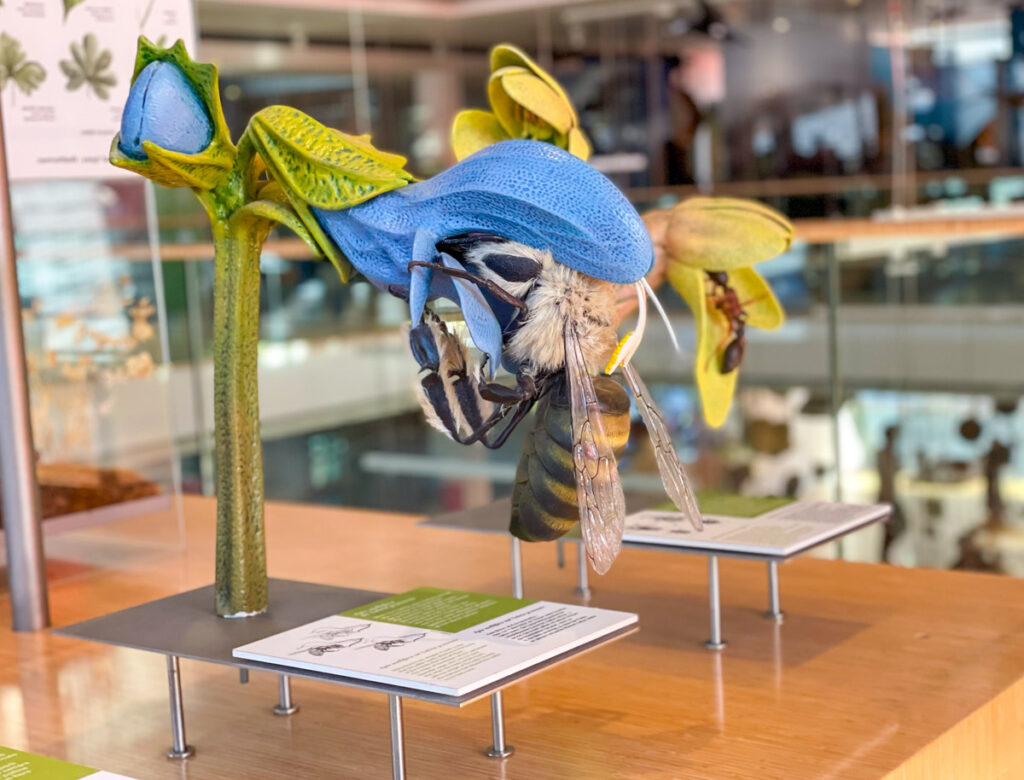
Palaeontology
On the first floor of the MUSE in Trento, you can admire the rich palaeontological collections, including tools and burials found in the area. Incredible reproductions of prehistoric people lead you to discover the ancient communities that inhabited the Alps, including the Neanderthals, who lived in this region for a time. The same floor also houses a sustainability section highlighting the harmful impacts of human actions on nature and a FabLab with a 3D printer.
Interactive installations for families
At the entrance to the MUSE, on the ground floor, there is a series of games with interactive activities to discover science while having fun. Here, you can understand the forces of physics by using a bicycle to turn on light bulbs or fans with a pedal stroke, create water trumpets or try out how a fakir’s bed of nails works.
The Maxi Ooh!, on the other hand, is a sensory space reserved for little ones aged 0 to 5 years, to be booked separately. It is a separate room from the rest of the museum that offers younger children visual, auditory and tactile experiences designed especially for them.
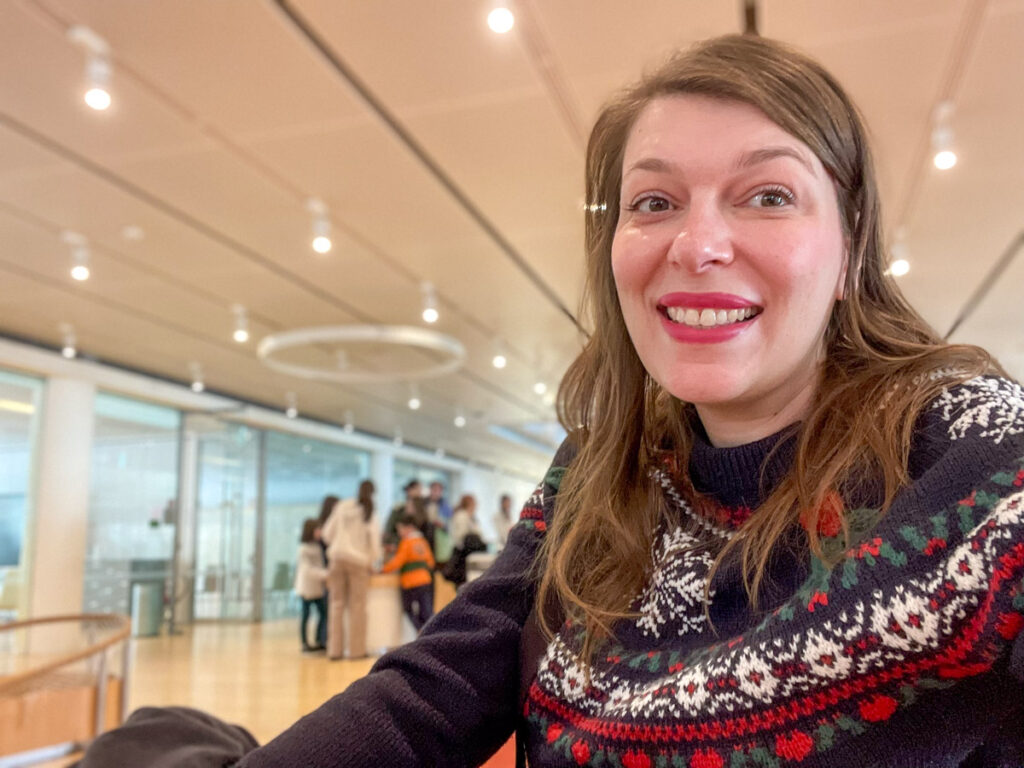
History of Life
The basement of the MUSE museum in Trento is primarily dedicated to the history of life, a fascinating journey through geological eras and evolution on Earth. The tour begins with the origin of the solar system and the first single-celled living forms. You can see fossils and replicas of animals from the Paleozoic, Mesozoic, and Triassic eras, with impressive skeletons of reptiles and dinosaurs.
The Cenozoic Era, characterised by the evolution of mammals, is introduced by an impressive whale skeleton. Embalmed animals and reproductions of extinct predatory mammals explain reproductive strategies. Insights into rodent species precede the final part, which is dedicated to the evolution of primates, including specimens of lemurs and monkeys.
The tour ends with a representation of human history, highlighted by a replica of modern man and a panel displaying skulls of various hominid species, offering a compelling overview of human evolution in the broader context of life on Earth.
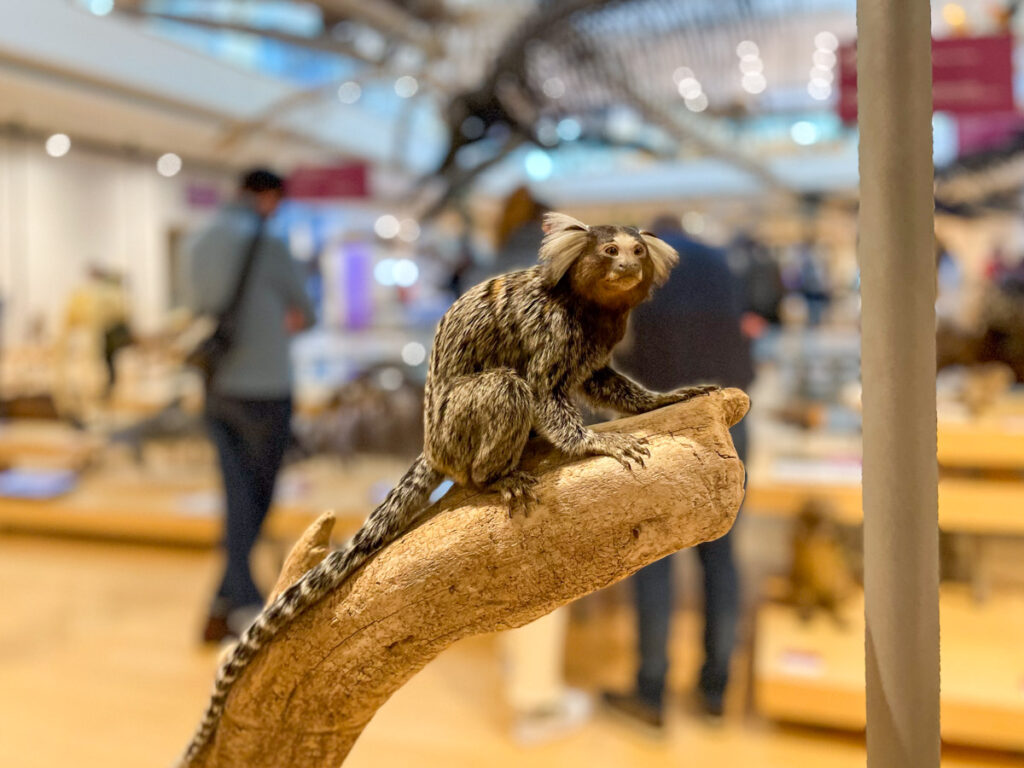
Tropical greenhouse
After the section on the history of life, you can immerse yourself in the museum’s fascinating greenhouse that recreates the environment of the Udzungwa Mountains in Tanzania. Among the fish and plants, you can see a similarity of the structure with the Biosfera in Genoa, also designed by architect Renzo Piano.
Temporary exhibitions at the MUSE Museum of Science in Trento
The MUSE in Trento also hosts temporary exhibitions that explore the themes of nature, science and sustainability. These exhibitions offer a unique opportunity to discover specific aspects related to scientific research and current environmental challenges.
MUSE with children: what you need to know
The MUSE in Trento offers a generally engaging experience for families. However, there are some aspects to consider when organising your visit. The museum has an extensive collection of stuffed animals not protected by glass, which could pose a challenge when visiting MUSE with energetic children. However, the interactive installation spaces on the ground floor offer a stimulating environment for young children’s curiosity.
There are no dining areas inside the museum, and re-entering is not allowed once outside. So plan accordingly when you book your entrance time, considering the time of about two and a half hours to explore the entire exhibition.
Helpful information for visiting the MUSE Museum of Science in Trento
The MUSE in Trento, a renowned natural sciences and palaeontology museum, has taken over from the Tridentine Museum of Natural Sciences, continuing its tradition. However, attendance is high during the holidays, and to avoid disappointment, I recommend booking tickets online in advance, as they sell out quickly.
There are no eating areas inside, but a café and a gift shop are in the museum atrium. If you arrive by car, please note that although parking is charged at €2 per hour or a fraction of an hour, there are still limited spaces.
MUSE Trento opening hours
The MUSE in Trento is open from Tuesday to Friday from 10 am to 6 pm, while on Saturdays, Sundays and holidays, it is open until 7 pm. The museum is generally closed on Mondays. Still, it may have special openings on holidays, so check the museum website to be sure.
Due to the high holiday attendance, I recommend booking tickets well in advance. You will also have to specify the time of your visit, which is binding. The time inside the museum is limited to three hours and, unlike other science museums, you cannot enter and leave on the same day.
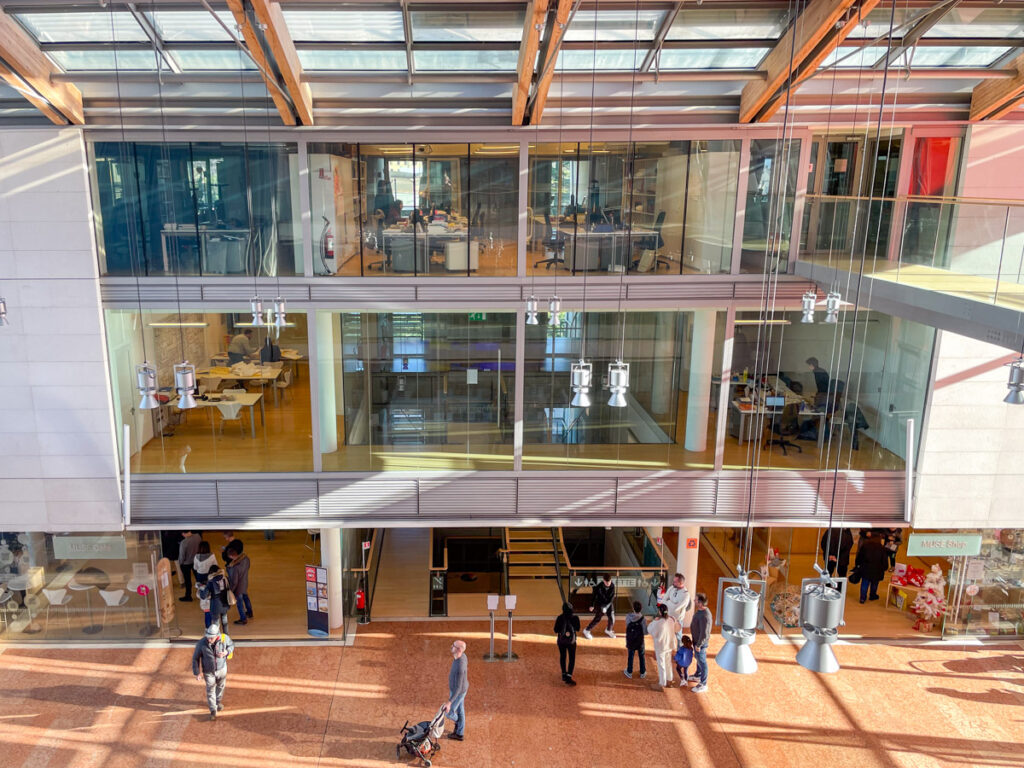
How much the MUSE ticket costs
Tickets for the MUSE in Trento cost €11, and there are discounts for families. With a full ticket for an adult, a child gets in for free. The Maxi Ooh!, the sensory space dedicated to children from 0 to 5 years old, is available at an additional cost of €2. Still, admission is free with the purchase of a MUSE ticket.
Given the limited availability of seats, I suggest you book your admission to the Maxi Ooh! in advance. The same applies to MUSE tickets if you plan your visit during busy times like the school holidays.
How to get to the MUSE Museum of Science in Trento
The MUSE of Trento is in the picturesque Le Albere district. It is an architectural project by Renzo Piano that was born from the redevelopment of the former Michelin factory. This complex of buildings, constructed sustainably, uses mainly local materials such as wood and stone. Before diving into the natural sciences, I recommend a walk around the neighbourhood, which offers ample green spaces and a beautiful playground for children.
The MUSE is easily accessible on foot from the centre of Trento. If you arrive by car, visitors can access an underground car park. It costs €2 per hour or a fraction of an hour, but it is not really spacious. There are no free car parks in the surrounding area, only a few small pay car parks, also crowded during the holidays.
MUSE Science Museum
Corso del Lavoro e della Scienza, 3
38122 Trento
Where to stay in Trento
In Trento, you can choose various accommodation options, from charming historic villas to centrally located hotels and B&Bs. The four-star Be Place Hotel is a short distance from the University of Trento and Piazza Duomo. For a more economical solution, the Habitat Guest House, in the heart of Trento, is convenient for the main tourist attractions.
If you want a quiet accommodation to explore the surroundings by car, Hotel Villa Madruzzo is ideal. Located in the hills of Trento, this four-star hotel offers a modern wellness centre with an indoor pool, experience showers, Turkish bath, steam bath and a mini outdoor pool with hydromassage.
In conclusion, the MUSE in Trento is a fascinating museum for discovering the natural sciences surrounded by Renzo Piano’s innovative architecture. From the path dedicated to the history of life to the evocative tropical greenhouse, each section offers unique experiences. Write to me in the comments if you already know the MUSE in Trento or were intrigued after reading this article.
